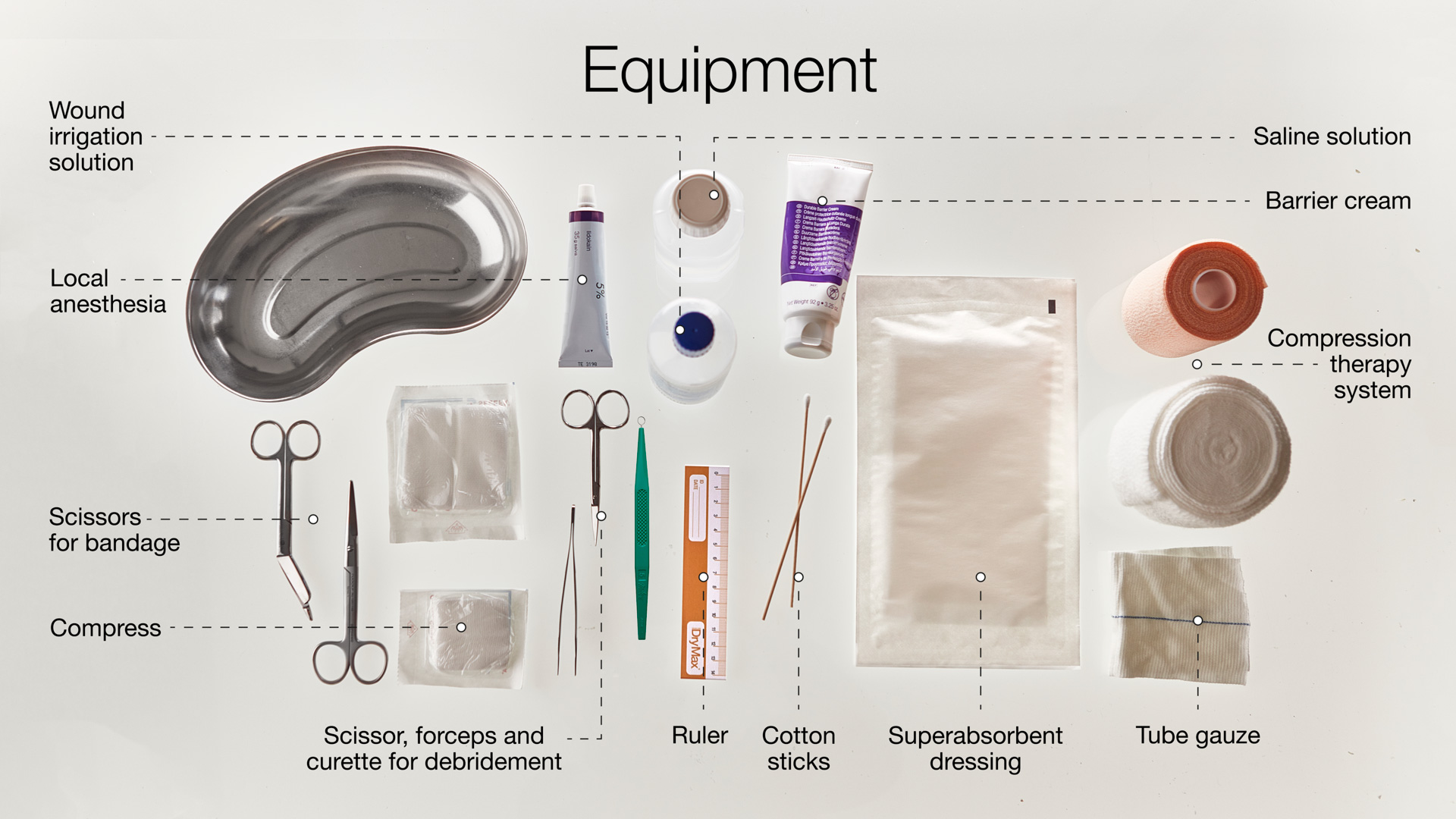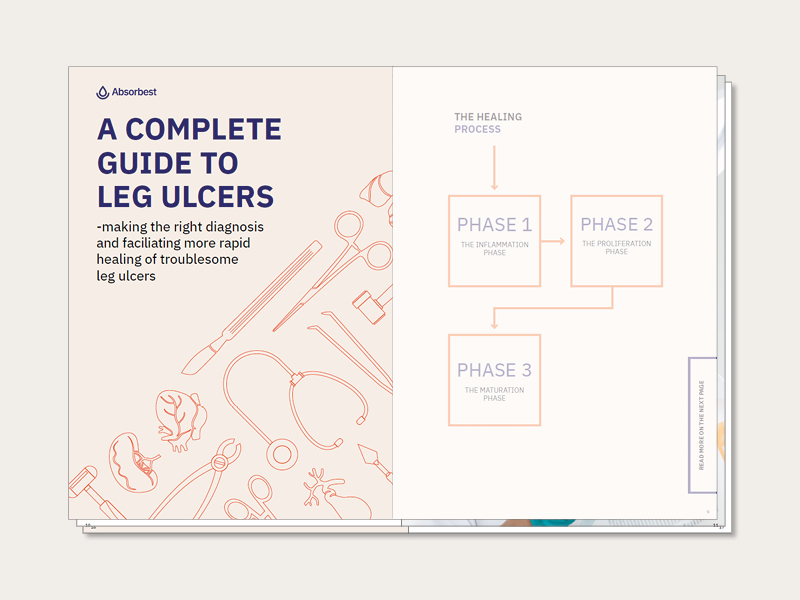Different hygiene routines may be adopted during wound care. The choice of hygiene routine – sterile or clean technique – must be determined based on local healthcare guidelines. The clean technique involves cleaning with tap water. The sterile technique, however, requires a consistent level of sterility throughout the wound care process.
Before treating arterial leg ulcers, it is important to provide the patient with suitable pain relief if needed. A validated pain scale should be used to assess the situation before making a decision about the type of pain relief required.
Relieving pain for the patient enables careful and thorough cleaning and debridement to be performed, which are crucial for a positive healing outcome. Following debridement, for example, the patient may need to be encouraged to take extra pain relief, as the wound can become painful several hours afterwards as part of the body’s reaction to treatment.
The arterial ulcer must be cleaned carefully to remove wound debris, bacteria, and any biofilm. The wound cleaning should follow local guidelines. It may be cleaned through flushing with tap water, preferably using a shower or a clean compress as part of the clean technique, using an irrigation solution or gel to prevent infection.
Debridement involves the removal of devitalised tissue using a monofilament pad, scalpel, or curette. Mechanical debridement must be performed with care and be wound-appropriate. This is an important part of the wound care process, that a doctor or an experienced nurse should carry out any debridement technique.

Bacteria are present in all hard-to-heal wounds and throughout the healing process, although infections can occur during patient transfer that cause the healing process to slow or stop. The formation of a biofilm is a common occurrence with hard-to-heal wounds. A biofilm is a type of membrane produced by bacteria and fungi as a way of protecting themselves and inhibiting healing.
To ensure the wound continues healing as planned, from the inflammation phase to the proliferation phase, it is necessary to treat the arterial leg ulcer. This involves removing any biofilm present through cleaning and providing good conditions for continued healing.
The choice of dressing depends on the nature of the wound and where it is in the healing process (its current phase). The dressing should help to provide the best possible healing environment.
Properties of dressings for arterial ulcers:
– The dressing should contribute to maintaining an optimal moist wound environment
– The dressing must have the ability to absorb and retain excess exudate within the dressing to counteract maceration
– The dressing must be comfortable for the patient to wear
– The dressing must be comformable
To be able to monitor the progress of a wound between treatments, it is necessary to document dressing changes. This documentation helps both you and your colleagues to understand and assess whether any adjustments are required in the treatment plan.
A wound care diary often contains information about, for instance, diagnosis, type of wound, risk factors to consider, choice of dressing, any previous administration of analgesic, and documentation of the wound itself. Follow your local healthcare guidelines for documentation and record-keeping.
Wound photo documentation
Wound photo documentation is recommended to help monitor the wound’s progress as it heals.
In addition to enabling you and your colleagues to monitor the wound, photo documentation may encourage the patient to become more involved and commit to the treatment. Patient consent should be gained when using wound photography, and proper data storage should be adhered to. A camera and single-use paper tape measures are required for photo documentation.

This complete guide to leg ulcers will help you to understand various wounds, what distinguishes these, and how they can best be treated during and after the healing process.
Lindholm C. Sår. Uppl 4:2 Studentlitteratur AB, 2018
https://www.nhs.uk/conditions/peripheral-arterial-disease-pad/
https://www.internetmedicin.se/behandlingsoversikter/karl/arteriell-insufficiens-kronisk/
https://www.vardhandboken.se/vard-och-behandling/hud-och-sar/sarbehandling/behandling-och-rengoring/
https://www.vardhandboken.se/vard-och-behandling/hud-och-sar/sarbehandling/forband/